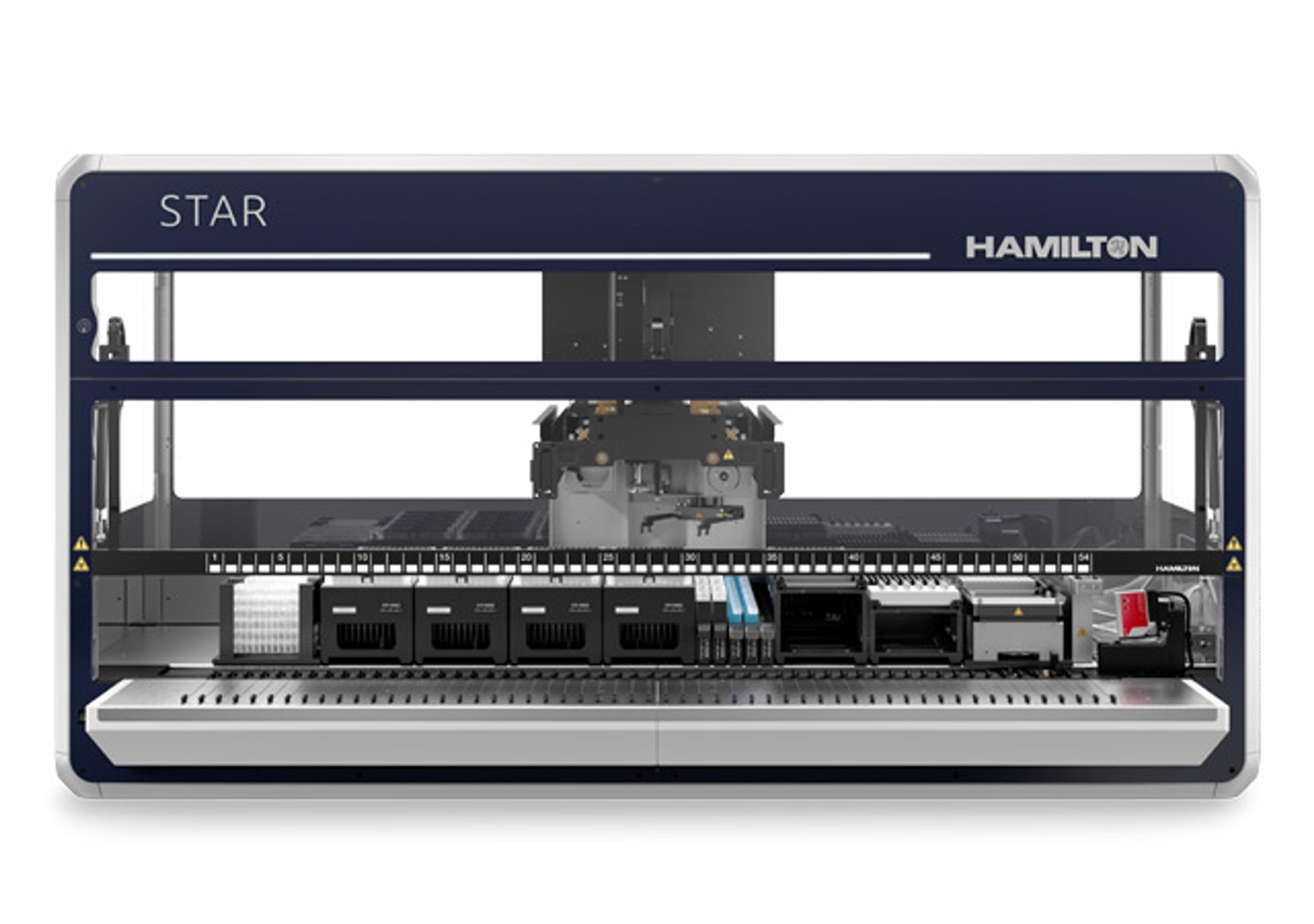Hamilton Robotics Automates the Promega CellTiter-Glo* Cell Viability Assay for High-Throughput Applications
26 May 2009Hamilton Robotics announced today a successful collaboration with Madison, Wisconsin-based Promega Corporation to automate the CellTiter-Glo luminescent cell viability assay on Hamilton's MICROLAB® STAR liquid handling workstation. The two companies have developed an automated, tested and verified protocol for the fast and accurate dispensing of the Promega reagent in microplate format.
Cell viability assays are widely used in biotech, pharmaceutical and academic research, providing information on cell health, proliferation and toxicity. In addition to drug discovery, common applications include research on disease, environmental damage and implant rejection.
The Hamilton STAR 8-channel platform, with its unique air displacement pipetting technology, performs precise dispensing of the CellTiter-Glo reagent in 96- or 384-well plate formats and can process multiple plates per day for high-throughput labs. An integrated shaker effectively disrupts cells at 400 rpm in 96-well plate format.
"The Hamilton air displacement technology has a number of advantages and the software interface is unique and easy to use," comments Sarah Shultz, senior automation scientist for Promega. "The robot runs smoothly and this protocol is ideal for customers running multiple plates per day."
"This is the one of several automated solutions we are developing with Promega," commented Rick Luedke, product manager for Hamilton Robotics. "With the current rapid growth in cellular research, this is a key collaboration for Hamilton. Automation can deliver increased speed, accuracy and reproducibility to the setup and processing of cell-based assays."
*CellTiter-Glo is a registered trademark of Promega Corporation.

